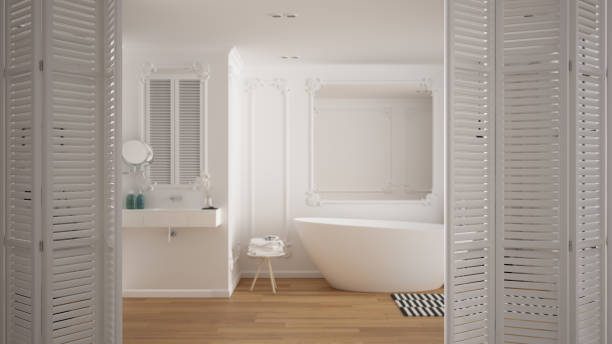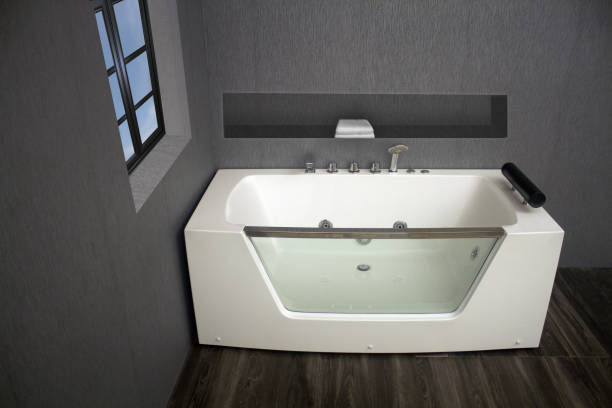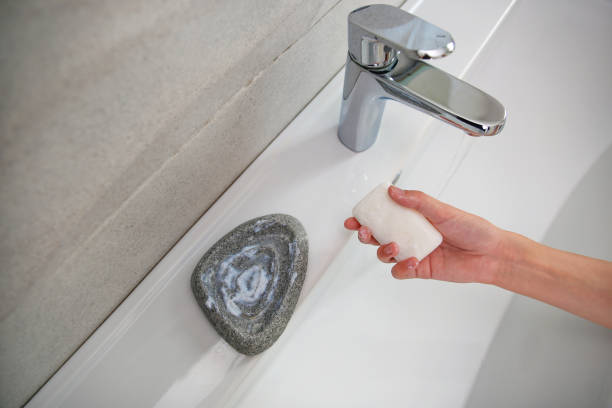The Importance of Comfort and Safety in Walk-In Tubs: Everything You Need to Know
Accessible Bathroom Solutions
When it comes to designing a bathroom that is both comfortable and safe, it is important to consider accessible bathroom solutions. One such solution that has gained popularity in recent years is the walk-in tub. These bathtubs are designed with the needs of individuals with limited mobility in mind, offering a safer and more convenient bathing experience. In this article, we will explore the importance of comfort and safety in walk-in tubs and provide all the information you need to know about this valuable addition to your bathroom.

Benefits of Walk-In Tubs
Walk-in tubs offer numerous benefits that make them an ideal choice for individuals with mobility challenges. Let's take a closer look at some of the key advantages these tubs provide:
1. Enhanced Safety
Walk-in tubs are equipped with various safety features, making them an excellent choice for individuals who have difficulty getting in and out of traditional bathtubs. Features such as grab bars, non-slip flooring, and built-in seating ensure a secure bathing experience, minimizing the risk of slips and falls.
2. Accessibility
Unlike regular tubs, walk-in tubs have low thresholds, allowing users to enter and exit the tub with ease. This accessibility feature is particularly beneficial for individuals who use mobility aids like wheelchairs or walkers. The wide, inward-swinging door further simplifies the process of getting in and out of the tub, eliminating the need to step over a high tub wall.
3. Hydrotherapy and Wellness
Many walk-in tubs come equipped with therapeutic features such as whirlpool jets or air jets. These features offer a range of health benefits, including improved circulation, relief from muscle soreness, and reduced stress. Hydrotherapy has been known to provide relaxation and pain relief, making it an attractive feature for individuals with arthritis, joint pain, or other physical ailments.
4. Independence and Dignity
By installing a walk-in tub, individuals with limited mobility can regain their independence and preserve their dignity. The ability to bathe without assistance not only boosts self-confidence but also promotes a sense of empowerment and overall well-being.

Walk-In Tubs
A walk-in tub is a specially designed bathtub that features a sealed door and a built-in seat. The door is typically located near the front of the tub, allowing for easy access without having to step over a high threshold. These tubs are available in various sizes and configurations to suit different bathroom layouts and individual needs. Some models even offer additional features such as therapeutic jets, chromotherapy lighting, and aromatherapy options.
Walk-in tubs are constructed with a strong focus on safety and convenience. Their design incorporates features to reduce the risk of bathroom accidents, enhance accessibility, and provide a luxurious bathing experience for individuals with limited mobility.
Walk-In Tub Installation
If you are considering installing a walk-in tub in your bathroom, it is essential to understand the installation process. While it is recommended to hire a professional for the installation, having an understanding of the steps involved can help you make informed decisions and ensure a smooth installation. Here is an overview of the walk-in tub installation process:
1. Assessment and Measurements
The first step is to assess your bathroom space and take accurate measurements. This evaluation ensures that the walk-in tub you choose will fit properly in your bathroom and accommodate any specific structural requirements.
2. Removal of Existing Tub
If you currently have a traditional bathtub, it will need to be removed to make way for the walk-in tub. This process involves disconnecting the plumbing and removing the old tub. A professional installer will handle this step to ensure it is done correctly and without causing damage to your bathroom.
3. Plumbing Modifications
Once the old tub is removed, any necessary plumbing modifications will be made to accommodate the new walk-in tub. This may involve rerouting plumbing lines and installing new fixtures as required.
4. Walk-In Tub Installation
With the necessary preparations complete, the walk-in tub can be installed in the designated area. This step involves properly securing the tub, connecting the plumbing, and ensuring all safety features are functioning correctly.
5. Testing and Clean-Up
After the installation is complete, a professional will thoroughly test the walk-in tub to ensure it is in proper working order. They will also clean up any debris or mess created during the installation process, leaving your bathroom clean and ready to use.

Conclusion
Walk-in tubs offer a range of benefits that blend comfort, safety, and accessibility. These specialized bathtubs allow individuals with limited mobility to enjoy a rejuvenating bathing experience without the fear of slipping or struggling to get in and out. Whether it's the enhanced safety features, therapeutic options, or the restoration of independence, installing a walk-in tub is a valuable addition to any bathroom. Consider the benefits and installation process outlined in this article to make an informed decision about incorporating a walk-in tub into your accessible bathroom solution.




